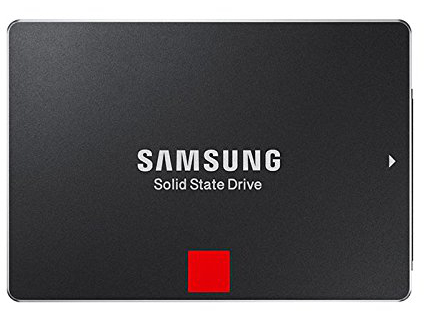Corsair Force LE SSD Review
The Corsair Force LE 960GB is a low-cost, high-capacity SSD that represents an excellent value in the entry-level space.
Why you can trust Tom's Hardware
Four-Corner Testing
Comparison Products
It took a while for 1TB-class SSDs based on TLC NAND to arrive from the fabless SSD vendors. But now that they're here, we're making our way through them. Once we have more drives tested, we'll update the charts to separate entry-level and mainstream devices. Currently, we're mixing low-cost and more expensive SSDs.
Samsung's 850 EVO 1TB is the industry's mainstream yardstick. The 850 Pro and SanDisk Extreme Pro are more premium offerings, and their prices reflect that status. The other drives in our charts are decidedly less premium. Klevv's Urbane is the only other SSD with a Phison S10 controller, but unlike our Force LE with TLC flash, the Urbane utilizes Toshiba's 15nm MLC NAND.
Native TLC Performance and Data Type Comparison



Writing data to an SSD with TLC flash produces two different results. The first comes from a smaller area programmed to write like SLC NAND, which has two charge levels—on and off. TLC, on the other hand, has eight charge levels to hold more bits. SLC is faster to read and write from, but consumes three times the capacity to store the same amount of data. Many SSDs employ a small emulated SLC layer for cache, but commit information to the larger pool of TLC.
Before Phison perfected its direct-to-die write method, what I refer to as TLC write speed was only around 125 MB/s. The new approach increases 128KB sequential writes to 340 MB/s, give or take 40 MB/s for dirty cells.
All of the S10-based SSDs we've tested demonstrate different performance when they're presented with incompressible data compared to compressible bits. Corsair's Force LE keeps with that tradition. Most of our tests use incompressible data, so our results end up looking slower. But it's a fact that any entropy (precompression) makes the S10 write at a lower rate.
To read about our storage tests in-depth, please check out How We Test HDDs And SSDs. Four-corner testing is covered on page six of our How We Test guide.
Sequential Read Performance


Regardless of whether Phison's S10 controller is paired with MLC or TLC flash, its sequential read performance is always very high. If your workload matches what we're doing here, you'd be hard-pressed to find a better platform.
Get Tom's Hardware's best news and in-depth reviews, straight to your inbox.
Corsair's Force LE 960GB comes in 15 MB/s slower than the Urbane with MLC flash, but the LE still fits in with our chart's faster group of SSDs.
Sequential Write Performance


Testing with 8GB of data made up of 128KB blocks, we see the Force LE also write data sequentially very fast. If you increase the sample size, performance eventually drops to native TLC speeds. But there are only a few situations where you'll move data that exceeds the size of the emulated SLC buffer. Thankfully, the new direct-to-die mechanism makes those occasions less painful.
Random Read Performance



Small-block performance has always been an issue with Phison-based SSDs. Most often, those transfers are random in nature, a worst-case scenario for any SSD. Given only two TLC-based drives in today's charts, we were surprised to see the Force LE fare so well. At low queue depths, the drive still delivers solid performance. That's a welcome change from some of the other low-cost TLC-based SSDs in the lab right now. Phison manages to deliver solid performance using TLC flash.
Random Write Performance



We would like to see Corsair and Phison work together to improve small-block random write performance. It seems that the pair enables quick random reads, but comes up short in our write benchmark.
The IOPS we measure are inverse to write latency. The lower the latency in this discipline, the better your system responds to metadata updates. We rarely talk about metadata outside of the NSA, but your operating system keeps track of your actions, updating a very small piece of information for each one. Opening a game or other piece of software involves interactions with several different files, each of which gets its own metadata change. These are all small-block random transfers.
Current page: Four-Corner Testing
Prev Page Specifications, Pricing, Warranty And Accessories Next Page Mixed Workloads And Steady State
Chris Ramseyer was a senior contributing editor for Tom's Hardware. He tested and reviewed consumer storage.
-
captaincharisma a 960GB SSD for just a little over 200 bucks US? i know corsair is a quality brand but i don't trust that driveReply -
LordConrad I will never buy a TLC drive with NAND that was manufactured at less than 20nm. Sorry, I just don't trust it for reliability or endurance.Reply -
BorgOvermind Why doesn't any manufacturer connect those internally in RAID 0 mode ? That would give double or even quad speed.Reply


